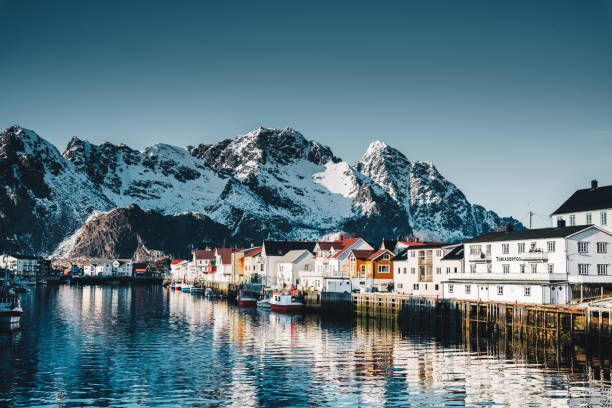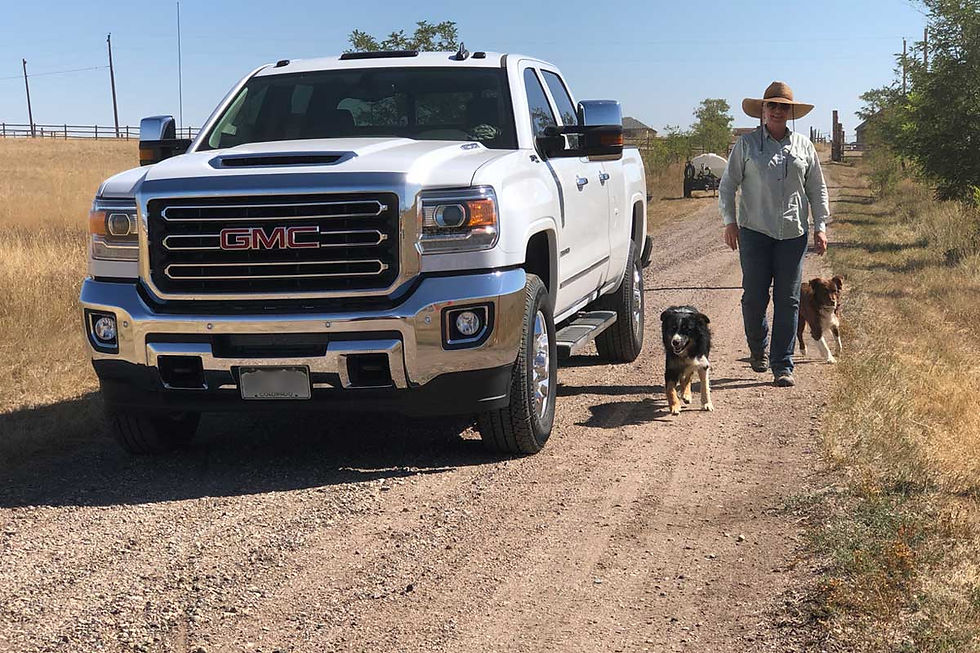Lani Malmberg- The nomadic grazing GOAT
- Garrett Wade

- Jun 22
- 5 min read

What is the secret factor that leads a person to become a pioneer of prescribed goat grazing in the United States, living an entirely nomadic life as she grazes across the entire Western United States? This was the question I was asking myself when I learned about Lani Malmberg. Now, after hearing her story on The Goat Grazing Podcast, I think I have the answer, and it is not what you might expect.

While many people might think Lani got into this line of work simply because she loves goats and nature, they would be missing a key piece. Sure, many people who love goats and nature might like the sound of traveling the country with a herd of goats, but almost all of them would lack the initiative to pursue such a dream, and once they were in the weeds doing jobs in -40-degree weather, they would quickly decide that lifestyle was not for them. But what is it that they are missing? What sets Lani of Goat Green LLC and the Goatapelli Foundation apart? Well, as crazy as it sounds, I believe that its Lani's Scandinavian ancestry.
You see, Lani was born to a cattle rancher, and that alone should have been enough to prevent her from becoming a goat grazier because cattle ranchers are notorious for their dislike of goat ranchers. However, Lani was also the descendant of the Scandinavian Vikings, and armed with the sheer audacity that drove them to sail ships to distant lands and face off against armies far larger than their own, she did not let silly infighting between ranchers get in the way of her destiny. So, when she saw the opportunity to take over a grazing project at Colorado State University, where she was attending graduate school, she seized it with zero hesitation.
The project, which studied prescribed grazing on Leafy Spurge, was disliked by all the other students, but where they saw it as a waste of time, Lani saw untapped potential. She wasted no time telling her major professor that she wished to take over the project and was directed to the Dean. As if she was being urged on by all the brave Scandinavian people before her, Lani did not waver as she told the Dean that she wished to hire her 11 and 12-year-old sons to build the fences the project needed to operate correctly. After a quick trip to the child labor office to obtain the law to ease his worry, her sons were hired as part-time workers for the university. Following her graduation she channeled the bravery in her blood and took the money her sons had made working for the school, and purchased a herd of Cashmere goats to start her prescribed grazing business.

During the interview, another act of audacity that really got me and further strengthened the obvious connection to her ancestors was her desire to build a giant barge. Scandinavians, Vikings in particular, were among some of the best shipbuilders in the ancient world, constructing longships that were capable of crossing the vast expanse of the ocean and storing week's worth of provisions on board. While Lani might not possess their expertise, she most certainly possesses their urge to construct a boat. Explaining the idea she had on a recent grazing job, she said, "I want to build some kind of barge and float the goats. Not truck them. Float them down the river and just hop off…. I think we could fashion some kind of pontoon, and it'd be really cool if we'd put all thousand in one bunch, wouldn't it?". Most people would never even think of such an idea, but as we already established, Lani is not like most people.
Now, while it is clear that she has audacity that few possess, I might not have drawn the conclusion that her Scandinavian heritage was what made her so successful, after all, many people can be brave, however, what I learned next is what truly convinced me!
When asked about how she plans her grazing year, she shockingly said that during winter she purposely goes as far north as possible. This is the exact opposite of what any normal person would do, but not Lani. Nope, it turns out she has the same love for the cold that allowed her ancestors to thrive in the frigid European north. In fact, she is so comfortable in the cold that when they were dealing with temperatures below negative thirty and struggling to keep the water from freezing in their campers, she said, "I kicked my Thermostat up to 60. I never keep it that warm". That warm?? Sixty degrees indoors is downright freezing!


If these reasons are still not enough to convince you, Lani's fascination with the supernatural world should be. Before the Vikings converted to Christianity, they were heavily spiritual and held Shamans in high regard. Lani was raised a Christian, but when the sudden disappearance of one of her herding jobs led her to seek help from a shaman, her outlook on the world shifted.
As she tells the story, Zippy Dog had gone missing, and after a month without seeing him, Lani got her chance to ask a shaman woman for help. On that call, Lani recalls the Shaman saying she was talking to a "..very big male (wolf) very big energy, and he's telling me, and I don't know what he means by them all, but he's telling me that they all decided if they took your dogs, you would have to stay there". The Shaman then told her to leave out an offering and call out the dog's name. With no better ideas, Lani left offerings each night, and to her great surprise, a few nights later, a skinny Zippy Dog scampered out of one of the bushes. Even talking about the experience made Lani tear up.
The impact this experience had on her was so profound that she reached out to the Shaman afterward and asked the woman if she would be willing to teach her. The woman said yes and even while laughing at the absurdity of her own story, Lani speaks very highly of the Shaman.

Courage, cold tolerance, and an interest in the spiritual world are all traits common in Lani's ancestors, and to me I am they are the very traits that shape Lani into the pioneering nomadic grazier that she continues to be to this day. Along with her son Donnie, her daughter-in-law Katie, another grazier named Connor, and her hardy cashmere goats, Lani travels the United States, fighting back fire fuels for $ 5,000 per day and teaching future graziers through her Goatapelli Foundation.

If you want to learn more about the nomadic Scandinavian goat grazier who pioneered the practice in the United States, Listen to her on the goat grazing podcast or find her at Goatapellifoundation.org and Goatseatweeds.com.





Comments